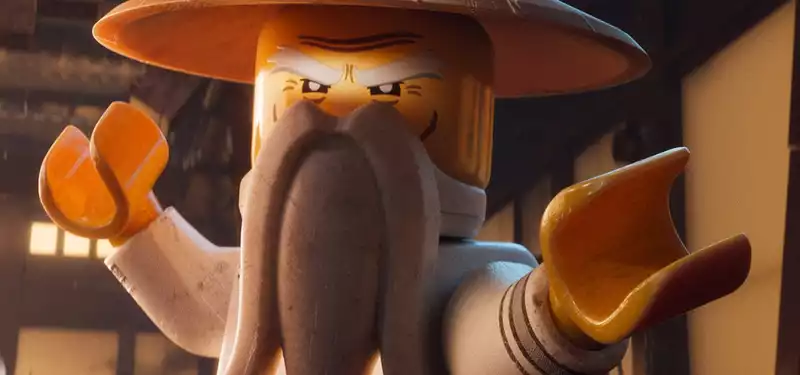Sep 27, 2016
Animal Logic, Kung Fu Fighting with LEGO
This past weekend saw the release of Warner Animation Group's "Storks: A LEGO Ninjago Short". In the film, Master Wu (Jackie Chan) battles a determined plastic chicken (Abbi Jacobson) in a seemingly peaceful ancient Chinese temple. In the end, the place is anything but peaceful.
"The Master" was produced by Sydney-based Animal Logic, which also produced "The LEGO Movie: The LEGO Batman Movie" in February 2017 and "The LEGO Ninjago Movie" in September 2017. Cartoon Brew spoke with production designer Kim Taylor and CG supervisor Greg Jaul about the specific challenges of the short, including how to make a kung fu fighting chicken.
The Master A LEGO Ninjago Short was directed by John Sanders, who wrote the script with Ross Evans. Master Wu is continually disturbed by a chicken. The two then engage in a destructive battle in and around the temple. In setting the story in a temple, Animal Logic had a few initial challenges: first, despite their extensive experience with brick environments, "The Master" would feature more of the natural world, including clouds, sand, and plants. From the beginning, our goal was to capture the natural world from the macro perspective of the Lego minifigure. For the exterior, we focused on small plant details and realistic outdoor light."
To bring that environment to life, the studio utilized Glimpse, a proprietary path tracing renderer that had begun development on The LEGO Movie. At the time, we were still using RenderMan as our primary renderer, but with the desire to create everything in the movie out of individual LEGO bricks and make it look so realistic that the audience would wonder if it was really stop-motion, we needed to customize the renderer to more efficiently meet our specific needs. to customize it"
."With 'The LEGO Movie' as a starting point, we decided to continue developing Glimpse for our next series of movies," Jowle continued. The Master' had photorealistic ground surfaces, rocks, and grass, and we needed to capture that in photorealistic LEGO. We knew what the LEGO bricks could do, but the challenge was to speed up the rendering to make everything else that didn't have LEGO shaders part of the same world."
There were other technical challenges to this short film. A significant amount of destruction took place, requiring the representation of the Lego character interacting with its chaos and even with each grain of sand. This was done using Side Effects Software's Houdini, but Glimpse made it possible to render so many complex types of elements interacting in a single scene.
Like in The LEGO Movie, the characters in The Master follow the same rules of animation. They do not bend, squash, or stretch, and there is no motion blur in the action, even in frenetic fights. This was the aesthetic choice made in the first film to maintain the "brick film" look of stop motion. However, to enhance the sense of motion, Animal Logic animators introduced the concept of brick blurring.
"Where a character moves quickly, we replace the bricks in between with different bricks," says Jowle. 'The animator might turn the character into a wider brick of the same color.' An example of this can be seen in the scene where Master Wu first jumps onto the large sculpted hat and spins before landing (see video above). If you frame the spinning character, you can see him turn into a series of blocks in the shape of a wheel.
Not using the principles of squash-and-stretch animation was especially difficult for the chickens. This meant that Animal Logic had to think creatively about how this mischievous bird would interact with Wu without actually deforming its body. Ultimately, very slight eye movements helped to communicate intentions.
"If you look at Aardman's and Pixar's early short films, they succeeded in giving almost inanimate objects an incredible amount of emotion. As soon as our talented animators did their first test and showed how much personality they could extract from an undeformed brick, most people agreed."
The eye movement, which came from the manipulation of the chicken's small, round, almost 2D facial shape, was a constant source of amusement for the Animal Logic team.
"During the design phase, we had to create a ROM (range of motion) for the chicken's face, Taylor says. It was a very interesting task because we literally only had one circle to work with. Because, literally, there is only one circle that can be used. A narrow eye. A crooked, angry eye. All the credit for the chickens goes to the animators.
Although it features characters from the upcoming LEGO Ninjago Movie, The Master is not a Ninjago-specific film. Instead, Animal Logic gives us an opportunity to enjoy the upcoming LEGO movie and the kung fu genre. The cheesier, the better," Taylor said."
.



Post your comment